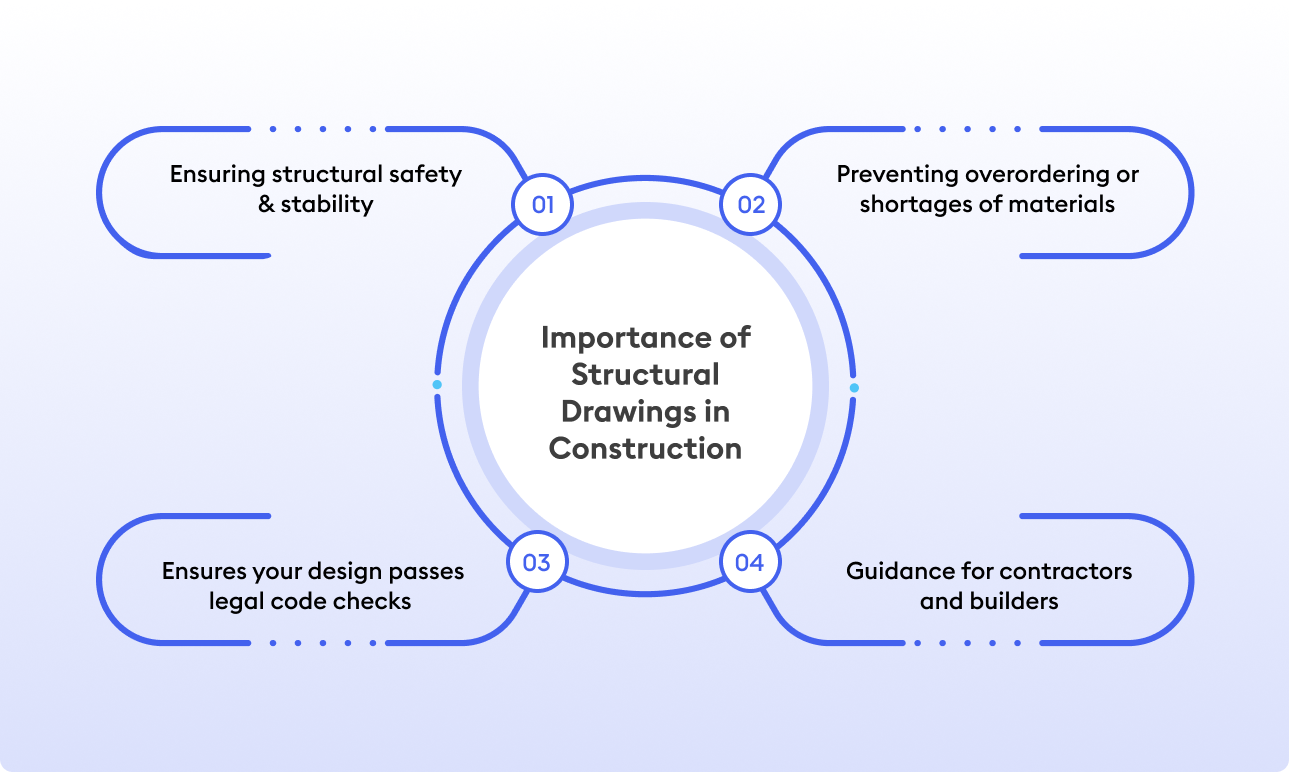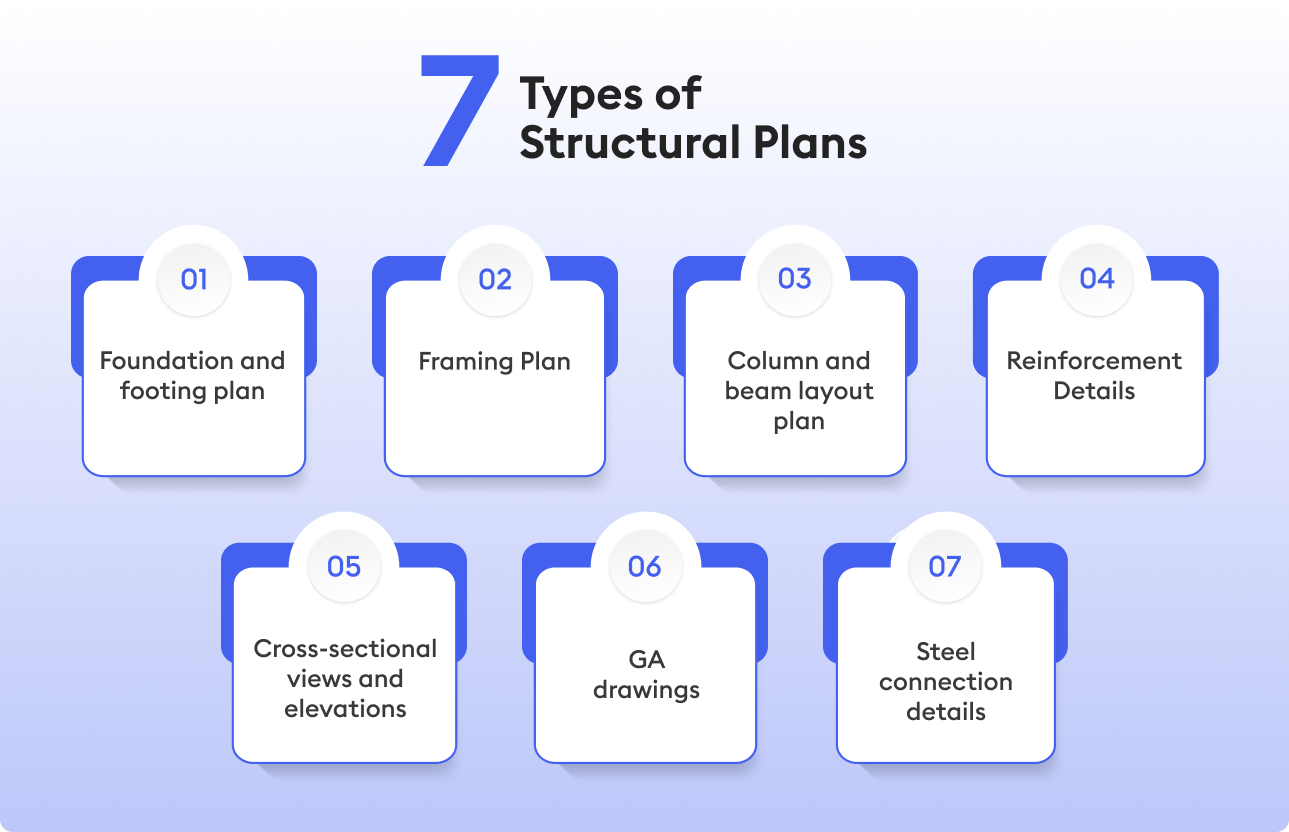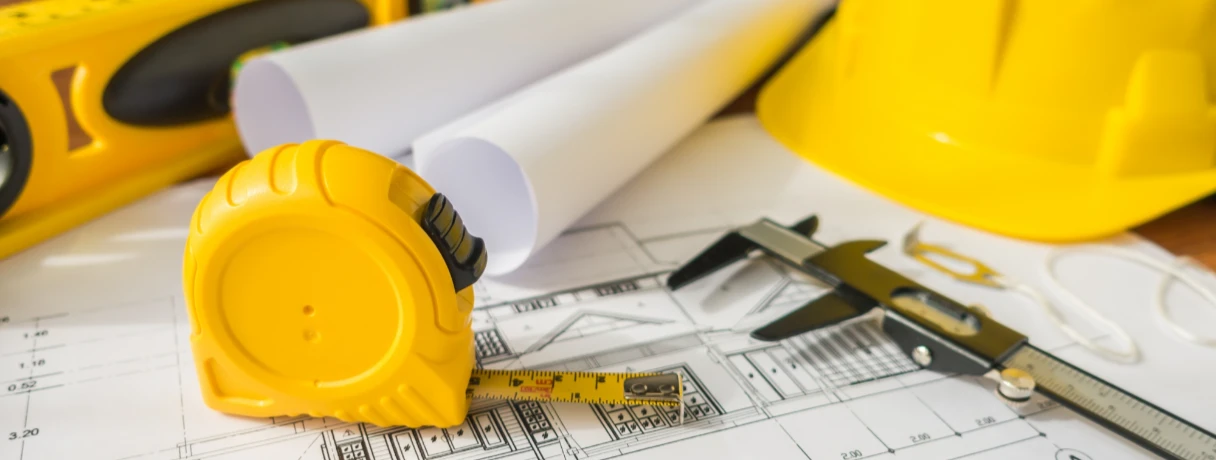A beginner’s guide to structural drawings
Have you ever looked at a set of plans and wondered what those crisscrossing lines, grids, and clusters of symbols mean? Those are structural drawings — the documents that ensure the spaces you build are stable.
These structural drawings determine how much load a beam can carry, how deep a foundation should be, and how rebar should be placed to ensure the structure lasts for decades. Without them, even the most beautifully designed building would risk crumbling under harsh conditions.
Industry research indicates that errors in drawings and documentation contribute to up to 30% of construction rework costs. It's safe to say that when structural drawings are misread, projects face costly delays and safety risks. That’s why understanding them is so important, even for beginners.
If you’re new to construction or simply curious about how buildings come together, this guide will walk you through everything you need to know — structural drawings explained in simple terms. We’ll cover what structural drawings actually are, why they matter so much in the field, and who is responsible for them.
Let's get started.
Structural drawings explained: What are they & why are they essential?
Structural drawings are detailed documents created by structural engineers that outline how a building or structure should be constructed. In other words, it is the framework for a building. It includes a detailed breakdown of the structure’s load-carrying elements, including foundations, columns, beams, slabs, and connections, detailing their dimensions, materials, and specifications.
Although structural drawings differ significantly from architectural drawings, they’re sometimes used interchangeably, which is simply not sufficient to do a takeoff and get started. Here’s how they differ:
- Architectural drawings: Layout, design, aesthetics (room size, finishes, façade).
- Structural drawings: Strength, load-bearing capacity, reinforcement, safety.
Great, now that we have understood what structural drawings are and how they differ from architectural drawings, let’s talk a little bit more about why they are so crucial in a construction project.
The Critical Role of Structural Drawings in Construction

There are 4 main reasons why accurate structural drawings are essential in any construction project.
Safety & stability
They calculate how much weight each element can carry, ensuring the building won’t collapse under loads or natural forces, such as wind and earthquakes. Every beam, slab, and column is calculated to withstand risk.
Accurate material specification & cost control
They include exact details of concrete grades, rebar sizes, and steel connections. This helps avoid waste and keeps projects on budget.
Legal compliance and permitting
Local authorities often require structural engineering plans before granting construction approval: no structural drawings, no permit.
Guidance for contractors and builders
Clear structural detailing ensures construction teams follow the correct specifications on site.
What are the different types of structural drawings?
There are 7 types of structural plans, and each one has a specific purpose in a construction project:

1. Foundation & footing plan
This type of structural plan includes the footings, foundation walls, slabs and reinforcement, ensuring the building’s loads are safely transferred to the ground.
2. Framing plan (floor, roof, wall)
This illustrates the layout of beams, joists, and other horizontal structural elements for each floor, depending on the material used.
3. Column & beam layout plan
These types of structural plans mark where vertical supports (columns) and horizontal members (beams) are placed.
4. Reinforcement (rebar) details
Provide the size, spacing, and cover for steel reinforcement.
5. Cross-sectional views and elevations
Cross-sectional views in construction represent a building or structure as if it were sliced through a specific plane. This showcases its internal components and how various elements fit together at that point.
6. General arrangement (GA) drawings
These types of structural plans give an overall view of how structural elements fit together.
7. Steel connection details
Show how bolts, welds, or joints secure steel members.
How to read structural drawings: A step-by-step guide for beginners
For newcomers, structural drawings can feel like a different language. Here’s a simple way to start decoding them:
Understand the title block
This contains all the essential details you need to know before reviewing the plans, including the project name, drawing number, scale, revisions, and the engineer’s stamp of approval.
Interpreting scales & dimensions
Obviously, the scale of drawings will be very different from what is constructed physically. Hence, it is essential to align with the written scale in the title block. A wall shown as 10 mm on paper may represent 1 m in reality. Always check the scale.
Decoding symbols & notations
Structural drawings use a set of standardized symbols and meanings — like rebar marks, section cuts, and line types. For example, “Ø16 @ 200 c/c” means 16 mm rebar placed every 200 mm. Once you learn these, the plans become easier to interpret.
Following line types and annotations
Solid, dashed, and dotted lines aren’t random — they show different elements, from hidden beams to reinforcement placement.
Beginner's tip: Start with the legend. Before diving into the details, read the legend or key — it’s your cheat sheet for understanding all the symbols. Instead of scanning the whole sheet, start with beams or columns only. Master one layer before moving on. Trace a single structural element (like a column line) across the plan, section, and elevation. This helps you connect 2D lines to the 3D structure.
Who prepares structural drawings? The role of a structural engineer
Structural drawings, like we discussed, are the backbone of any construction project. They are meticulously prepared by licensed structural engineers with years of hands-on experience, ensuring that every beam, column, and foundation detail aligns with building codes and safety standards. Along with the drawings, structural engineers also:
- Analyze loads, material strengths, and environmental factors to ensure long-term structural stability.
- Review and coordinate with architects, contractors, and other engineers to accommodate design changes.
- Carry professional liability, adding accountability and protecting both contractors and property owners. That seal transfers real-world accountability, protecting contractors from being blamed for design flaws.
Building with confidence through clear structural plans
Structural drawings may be technical, but they serve a simple purpose: giving every team clear instructions to build safely and accurately.
By defining load paths, specifying materials, and detailing reinforcements, these plans guide engineers, contractors, and builders at every stage, turning ideas on paper into structures that stand the test of time.











.webp)

.webp)

